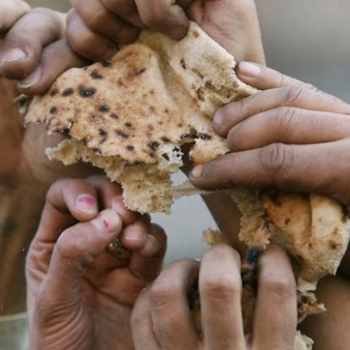“Trauma is the confrontation with an event that, in its unexpectedness and horror, cannot be placed within the schemes of prior knowledge” (Cathy Caruth)
“When believers are conformed to Christ, they are conformed to the other, to the neighbor in suffering and need. Again, through the same love, we are to be changed and to make the infirmities of all other Christians our own; we are to take upon ourselves their form and their necessity” (Martin Luther)
When I first designated a reading week for myself in trauma-informed theology, I was thinking primarily of what I might learn in order to provide better pastoral care for my congregation and community, following Luther’s sense of conformity, taking on what others bear.
Inadvertently, I think I designed the best kind of week for myself, because as I have spent the week reading, I’m realizing how much of what Karen McClintock calls “accumulated secondary trauma” I’ve had stacking up. Spending a week reading isn’t the entire solution, but for my personality, it’s certainly restorative.
I think overall I have tended to underestimate the secondary trauma I experience as a pastor, in particular the chronicity of it (on chronicity and trauma, see Deanna Thompson’s Glimpsing Resurrection).
I could give you a list of the types of trauma I’ve been close to just in this past year–it’s a lot. That in addition to daily events in the world. But when you are pastoring among those experiencing trauma, you’re focused (rightly) on how to be a caring presence in that situation. We “take upon ourselves their form and their necessity.”
Perhaps what I have under-estimated, and this week has revealed, is what I need to do to continue to be a healthy presence among those experiencing trauma. This is made difficult by the fact that, like trauma itself, addressing secondary trauma cannot be placed with schemes of prior knowledge.
What Is Trauma-Informed Theology?
Trauma theory is known to most of us through a clinical diagnosis, post-traumatic stress disorder. In this sense, we think of it within psychoanalytic or clinical categories. But trauma has a wider field than simply the clinical. As Dirk Lange points out (in Trauma Recalled), “trauma is also a way of reading history.”
Consider this quote from Lange:
The traumatic event is experienced as a shock of survival–why did I survive? The shock of survival is the shock that ‘death’ was encountered and missed. Something in the event was missed and is continually experienced, after the event, as something inaccessible, as something that haunts… trauma is a continual awakening to an event that was not fully understood and that, because of this incompleteness, is being continually made present (8).
You can read this and certainly think of a clinical situation. This is the kind of work done in therapy. But it is also more than that. It is the work of whole cultures and communities. Some theorize, as David Carr does in Holy Resilience, that this way of reading history is a way of reading Scripture also.
“The embedding of survival of trauma into the Bible provides a partial answer to why Jesus and Christian scriptures flourished when imperial scriptures did not. The Jewish and Christian scriptures arose out of and speak to catastrophic human trauma” (5).
So, trauma-informed theology is pastoral theology that strives to be informed about clinical approaches to trauma, and then bring spiritual resources as helpful and clarifying into those therapeutic contexts.
But trauma-informed theology is also, we might say, hermeneutical theology, inasmuch as it is an especially clarifying way to read the sacred texts (at least of Jewish and Christian tradition). Or perhaps we shouldn’t say clarifying, but rather say the way, inasmuch as much of the way the text is recorded and structured arises out of trauma.
Handbooks and Memoirs
Many trauma-informed theological works take the form either of handbook or memoir, and for good reason. Telling the stories, even if they describe something elusive and inaccessible, can at the right time contribute to the healing (of note, asking the recently traumatized to immediately recount their experience may actually be harmful… on the other hand, many therapies related to treating trauma include reviewing the events while associating them with new emotional states and physical experiences, like EMDR therapy).
One of the more lovely memoirs on trauma that also functions as a kind of workbook is Carol Howard Merritt’s Healing Spiritual Wounds.
For those looking for a more straightforward workbook workbook, there’s When Trauma Wounds by Karen McClintock.
Many of those who write about trauma intuit that there is a need for more than simple analysis. Those reading about trauma need resources to engage. We need a process, and tools, blended with insights.
Repetition Disruption, Liturgy, and Trauma
Which is why finally, even the handbooks themselves invite readers into the performance of types of liturgies to address trauma, or understand liturgy itself (especially centered in Christ) as the site. Healing Spiritual Wounds gives exercises or assignments, and these are ultimately brief contemporary liturgies.
The closest argument for liturgy as the healing resource for trauma is Dirk Lange’s Trauma Recalled. At one point, towards the end of his book, he says the most amazing thing:
“Grace is the displacement of all mystical foundation; it is the displacement of God in vulnerability, need, suffering [in Christ]. This grace is the absent thing in every event, the permeability of every context, the dissemination of subject in order to find life through faith alone. The liturgy itself disseminates and juxtaposes rather than systematizing and concluding. It points to the hole, the abyss, in which the ‘promise’ can be truly promise.”
Here we find a meeting place for the two epigraphs with which I opened this blog. Trauma cannot be placed within prior schemes of knowledge. We are called to make the infirmities of others our own, even their trauma. There’s a liturgy for that, and his name is Christ.
Lange calls it the Eucharist, or the Mass. He’s not wrong.
In Healing Spiritual Wounds, Carol Howard Merritt tells the poignant story of a time her mother went to the house of their pastor’s wife. He had just confessed adultery to the congregation. The spouse was home alone. Her mother took water and a bowl and went to the pastor’s wife’s home and washed her feet.
She knew there weren’t really words, the trauma was haunting and incomplete and visceral. Only liturgy could hold space in such a moment.
I’ve created my own mini-liturgy for this week, time at home with a stack of books and more time to cook and clean and run. I certainly wouldn’t say that’s the prescription for everyone, but it is one for me. Part of that liturgy also includes spelling some of all of this out for you, dear reader, because I think when I blog, and I also feel and pray.
So far a big take-away for me in reading this week has to do with what various authors call surviving or going on. “I survived.” “I’ll go on.” It’s the lingering and overwhelming presence of the ‘after’ that catches us. This is the post in post-traumatic. This is probably also one reason liturgy comes to mind for many when they reflect on theology informed by trauma.
Trauma-informed theology will need to account for the echo, the repetition, the way to go on… and on… recalling trauma, glimpsing resurrection, healing spiritual wounds, practicing holy resilience.
What Shelly Rambo calls a theology of remaining.












